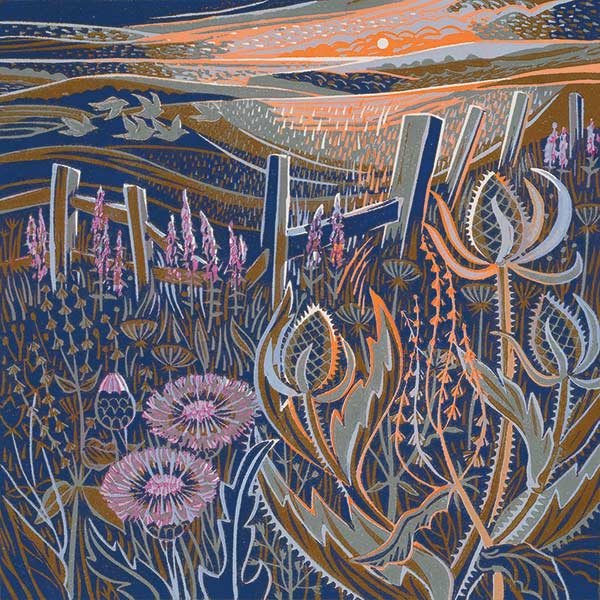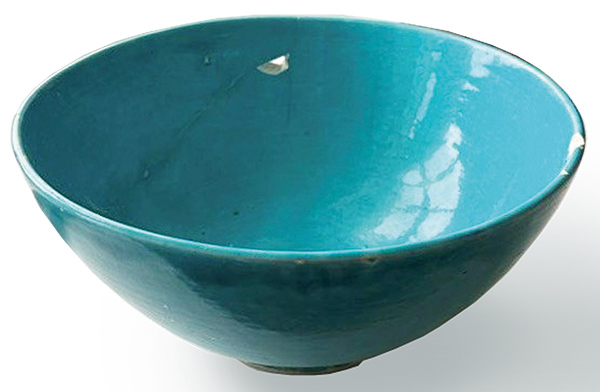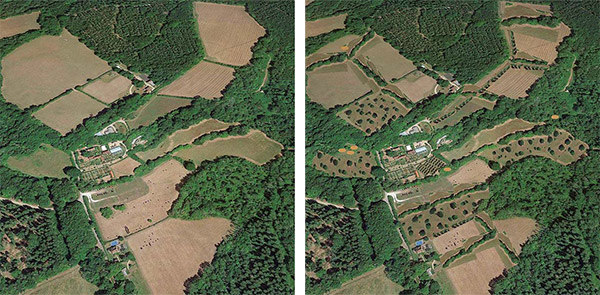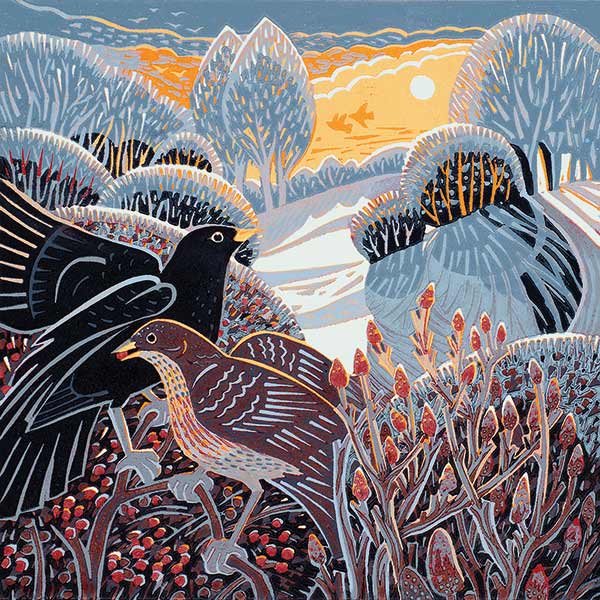Subtotal: $
Checkout-

The Home You Carry with You
-

Portraits of Survival
-

Three Pillars of Education
-

The Joy of Mending Jeans
-

Zero Episcopalians
-

Making Art to Mend Culture
-

Repairing Relationships
-

Forgiving the Unforgivable?
-

Not Everything Can Be Fixed
-

A Life That Answers War
-

Forgiving Dr. Mengele
-

Editors’ Picks: Faith, Hope and Carnage
-

Letters from Readers
-

Editors’ Picks: Klara and the Sun
-

My Liberal Arts Education in Prison
-

One Parish One Prisoner
-

What’s a Repair Café?
-

Analog Hero
-

The Sacred Sounds of Hildegard of Bingen
-

The Path from Death to Life
-

In Praise of Repair Culture
-

Just Your Handyman

To Mend a Farm
A restored landscape will be more than it was before, bearing the marks of damage and repair.
By Adam Nicolson
March 22, 2024
Available languages: Deutsch
Next Article:
Explore Other Articles:
If I look out of the window at home in Sussex, across the woods and pastures of the farm where I live, one word comes back to me each morning: repair. Remake this place. Mend it. Undo the damage that was inflicted on it, along with most of the English landscape, in the late twentieth century, when a horrible litany unfolded of removal and reduction, an ignoring of the past, an imposing of the chemical and clarified present.
The only duty to a place like this must be to reinvigorate it, make it good, do what the world in general is coming to recognize – that undoing is as important as doing, that unchange can be as healthy as change, that the half-forgotten past can hold many answers.
I don’t often repair things, but I know I should, and so when, the other day, I found an old and beautiful bowl that was broken years ago and put away in pieces in a cupboard, I decided to mend it. To make amends, somehow, by mending it. My wife had bought it from a woman who imported objects from Iran and the bowl had about it all the allure of that country: a purity of form, wide and full, almost but not quite a hemisphere, about ten inches across. When complete, it could hold five or six oranges or pomegranates. It was coated all over in the deep turquoise glaze of Isfahan, a color used for tiles in the pools of Persian gardens to suggest the brightness of the sea or of the water in a clear river, luminous and deep.

Annie Soudain, Seed Heads, reduction lino print, 2015. All artwork by Annie Soudain. Used by permission.
The bowl was in about eight pieces and the fragments revealed on their edges the clean white body of the clay of which it was made. And so: The table cleared and the pieces laid out. A good strong glue. My sleeves rolled up, hands washed. And slowly, perhaps over an hour, I fitted the pieces back together, finding in the slight bulges and ripples of the broken edges their counterparts on the other side, a protrusion here, a depression there, so that the mended edges met each other with an extraordinary and natural precision that no designer could have mimicked. These almost-bubbled contours of the break itself guided the process of recovery, as if the break were remaking itself and the film of the accident run in reverse.
It made me curiously happy. I was in no hurry to finish. The broken form started to become whole.
When everything was at last complete, it wasn’t. There was a small chip on one side and a tiny, almost-triangular piece was missing, just at the point where the body of the bowl reached the vertical. Other glued joints came up to its corners and met there, like the lanes coming into a marketplace in a medieval town, leaving a triangular hole. I looked in the cupboard where the pieces had been stored but could find nothing. This wonderful bowl could never hold a brimful of soup or stew again. Fruit could sit in it but nothing liquid. And so I set it on the windowsill with its flaw turned away and left it for a while, seeming perfect.

The author’s mended bowl. Image courtesy of the author.
Now, though, I have started to wonder more about that bowl and its missing triangle, and how it might reflect the remaking of a landscape. The gap in the bowl changes the thing. It is both the same bowl and not the same bowl that it was before. It now embodies some of its history with us, a kind of narrative in the object which its smooth, cleanable, glimmer-perfect surfaces would have resisted before. Now, though, it has more: on top of all of those everyday and usual qualities, the chromatic pleasure of its blueness, the lovely substance of its roundness, it has its history of use, of breakage and mending, of being ours, of being dropped, forgotten, and then cherished. In its remade state it is somehow, perhaps only to me, the author of its remaking, more valuable than before.
Mending, and particularly incomplete mending of this kind, infuses material objects with a quality that is not quite ownership but more like a mingling of our identity with theirs. There is something of us in the bowl now, as if the bowl has acquired some of our lives. I feel like saying that where we previously owned the bowl, the bowl now owns at least part of us. Mending, it turns out, is a form of melding.
The great twentieth-century French philosopher Henri Bergson considered a good existence to be one that was absorbed within the perpetual becoming of life: “To exist is to change, to change is to mature, to mature is to go on creating oneself endlessly.” That idea has echoed though all cultures and all human history. Zen Buddhists, the makers of the great Gothic cathedrals in Europe, the first Greek philosophers on the shores of the Aegean, modern physicists, and the Romantic poets have all understood the centrality of becoming. Nothing is essentially itself. Everything is always on the road from one state to another. Identity – of bowl or person or creature or building or place – is only the form through which the flow of the material world is currently passing.
This flood-in-time is the river in which we float and mending, the love and habit of repair, is a conscious act within it, a swimming more than a floating in time, extending past into present and future, not to deny the passage of time but to make it explicit, to show that we are living within it, making our own existence concordant with Bergson’s perpetual becoming. The mended bowl has been one thing, is now another, and will in time, as we will, move on again.

Left, The author’s farm, as seen from above. Right, Nicolson’s reimagining of his land after repair. Images courtesy of the author.
That time-breadth is the beauty of repair and nowhere is this of more vivid importance than in the landscape around us. We are in a polycrisis of nature, climate, society, belief, governance, and even language. How are we to speak in a world that is fraying to the point of incommunicability? How do we connect what we have been with what we might be?
Surely one route is in mending, which those who have tended to the landscape, above all the premodern farmed landscape, have always understood to be central to their lives. The ancient practice of agriculture, of shaping the growing world to our needs, is founded on five interrelated recognitions: things break and decay; there is something good in that perishing; once mended, things will grow again; mending is a form of belonging; and a mended place carries the mark of its own (often repeated) breaking.
Modern destructive agriculture, fueled by the chemical industries after 1945, abandoned this five-part vision of belonging, making, and re-making and substituted it for a one-term gospel of dominance. Care for places became essentially unitary and divorced from time: clear the ground by excluding all competitors, clean it up, and extract what value you can. The cyclicality of mend-and-grow was abandoned in favor of spray-and-run.
The ancient agricultural principle was no different than the basis, for example, on which birds equip themselves for life. At the core of their year is a phase of mending. Reduced to its essentials, the bird pattern is this: find a territory, get a mate, raise and feed the young to the point where their lives are their own and then withdraw and mend. In late summer, in England, nearly all the birds fall silent. They have undergone the stress of raising one or more broods of chicks. Their bodies are exhausted, their plumage often unrecognizably torn and frayed. And so in the quiet and dark of a thorn thicket or the depths of a forest, their bodies repair themselves. Internally, all the organs devoted to breeding, to the production of sperm and the laying of eggs, shrivel away. Even that part of their brain that is dedicated to singing the songs with which they establish their territories and attract their mates shrinks to nothing, waiting in abeyance until needed again the following year. The birds molt their old used feathers and new ones sprout in their place – not all at once; the birds are never left naked or flightless – but one by one new feathers appear until the birds are equipped again. The bodies of those that must fly south gather reservoirs of fat on which to make the journey.

Annie Soudain, Winter Glow, reduction lino print, 2017. All artwork by Annie Soudain. Used by permission.
For us culture-beings, there is another dimension to this. We can choose to repair our selves and our world. And why should we? Not only because our interests are biologically tied up with those of the plants and animals that we have been busily destroying for the last eighty years, but because the act of memory which repair represents is essential to our own happiness. Loss of memory is loss of meaning, and mending is one of the lamps of memory, lighting the way from past to future.
John Ruskin’s idea, writing about architecture, was that
the greatest glory of a building is not in its stones, nor in its gold. Its glory is in its age, and in that deep sense of voicefulness, of stern watching, of mysterious sympathy, nay, even of approval or condemnation, which we feel in walls that have long been washed by the passing waves of humanity. footnote
If a place has long been worked by human hand, it is replete with the complexity and muddle of thousands of human decisions. Wisdom and idiocy have both played their part. Unless it has been clarified by modern impositions, a farmed landscape is a model of making do and getting by, of a gate that may be in the slightly wrong place but has always been good enough, a tree that has outgrown its hedge, a pasture gone reedy with springs bursting through its grasses. In its accumulations it has acquired Ruskin’s “voicefulness.” The long-mended thing speaks to us with what he called “mysterious sympathy,” as if to say, “Yes, listen, you can be at home here too. This is a human place. Its mending is its meaning.”
Loss of memory is loss of meaning, and mending is one of the lamps of memory, lighting the way from past to future.
Such a landscape is not a view or a work of art. It is an intricate layering of past lives in which human and natural have long been interfolded. To remake it is not to abandon it or to rewild it but in some ways the opposite: to reculture it, to allow the ancient connections between human use and animal and plant life to re-establish themselves in a way that persisted here for at least half a millennium before the locust years of the late twentieth century descended.
I am now in the midst of a long program of repair in this place, of allowing it to grow back into its historical form. But what is repair in that landscape sense? It is the removal of those influences that will not allow it to self-repair. Repair, oddly enough, lives in an ambiguous place that combines intervention with a lack of it, providing the frame within which an enriched natural life can re-assume its role. It is full of mends, and there are many missing, roughly triangular corners where something other than human intention holds sway. And so to encourage myself, I have made an image to guide me: the farm as it is now, a little bare, a little lifeless, and another of what it might become long after I am dead: full of thickness, every hedge allowed to balloon and roughen; little woods on steep slopes; no field bigger than three or four acres; trees growing in the middle of pastures; green lanes crossing the landscape; ponds in the wet patches. Amidst all of which, the cattle and sheep of the farm will find their home, as will the nightingales and turtle doves, and those people who will be lucky enough to call it home.
Footnotes
- From the chapter “The Lamp of Memory” in John Ruskin’s Seven Lamps of Architecture, Works VIII (233–4).
Already a subscriber? Sign in
Try 3 months of unlimited access. Start your FREE TRIAL today. Cancel anytime.

































Arlene
Very helpful as I am starting to visualize on what to do with my less than 1hectare of land. Thank you so much
John Geffel
Another thoughtful and beautiful article on repair and restoration. We live on a small farm in the NW and can so relate to the author’s observations and perspectives. Since moving here 7 years ago we’ve been on a similar journey of restoration. Our area is considered originally to be an Oak savanna and that is what we have been seeing slowly come back as the land mends itself. We will never see the grandeur of the white oaks in their majesty and maturity, it’s enough to nurture their small forms now. We are also reseeding with native pollinators so our bees have plenty of resources during their active spring and summer seasons. The pace of change is measured in years, not months or weeks, but this slow process “melds” us to the land… as it should.